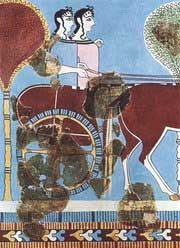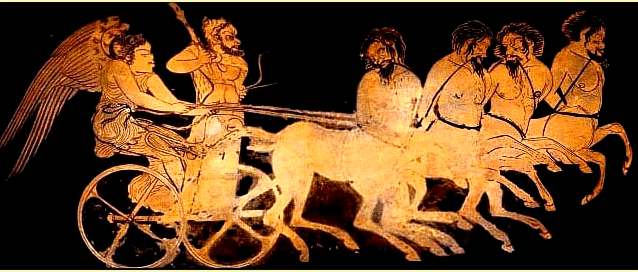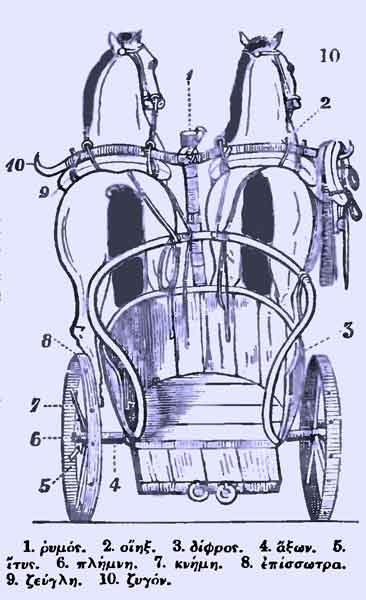|
|
A chariot is a two-wheeled, horse-drawn vehicle. In Latin biga is a two-horse chariot, and quadriga is a four-horse chariot. It was used for battle during the Bronze and Iron Ages, and continued to be used for travel, processions and in games after it had been superseded militarily. Early forms may also have had four wheels, although these are not usually referred to as chariots. The critical invention that allowed the construction of light, horse-drawn chariots for use in battle was the spoked wheel. In these times, most horses could not support the weight of a man in battle; the original wild horse was a large pony in size. Chariots were effective in war only on fairly flat, open terrain. As horses were gradually bred to be larger and stronger, chariots gave way to cavalry. The earliest spoke-wheeled chariots date to ca. 2000 BC and their usage peaked around 1300 BC (see Battle of Kadesh). Chariot races continued to be popular in Constantinople until the 6th century. Mycenae
The Mycenaean Greeks made use of chariots in battle. Administrative records in Linear B script , mainly in Knossos, list chariots (wokha) and their spare parts and equipment, and distinguish between assembled and unassembled chariots. The Linear B ideogram for a chariot (B240, D800;DCCC;) is an abstract drawing, showing two four-spoked wheels. The chariots fell out of use with the end of the Mycenaean civilization, and even in the Iliad, the heroes use the chariots merely as a means of transport, and dismount before engaging the enemy. Chariots were retained only for races in the public games, or for processions, without undergoing any alteration apparently, their form continuing to correspond with the description of lashed them with a whip and tamed them until they lost their fierceness and were ready to mind the rein. Then Admetus climbed into the chariot; and Apollo stood by his side and held the reins and the whip, and drove into Iolcus. James Baldwin, Old Greek Stories
Hermes and his (flying) Chariot
Herodotus calls a wealthy family a tetrippotrophon (able to maintain four horses for a race)
References Anthony, David W., 1995, Horse, wagon & chariot: Indo-European languages and archaeology, Antiquity Sept/1995 The central pole was probably attached to the middle of the axle, though it appears to spring from the front of the basket. At the end of the pole was the yoke, Links
Part from "http://en.wikipedia.org"
 |
|
|||||||||||||||||




